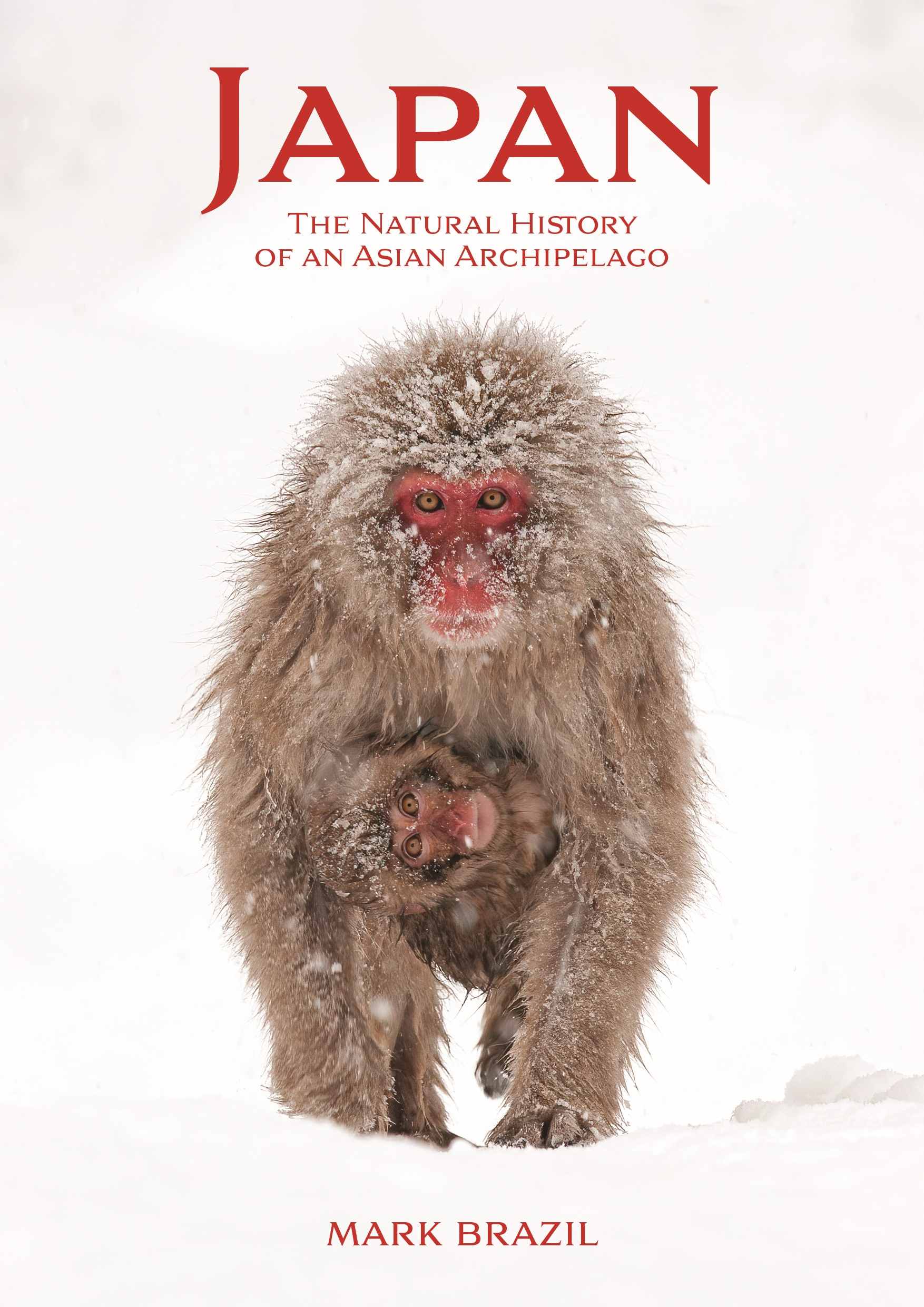Japan: the Natural History of an Asian Archipelago
- Japan: the Natural History of an Asian Archipelago by Mark Brazil (Princeton University Press, New Jersey, 2022).
- 384 pages, 600+ colour photos, illustrations and maps.
- ISBN 9780691175065.
- Bookshop from £26.99.
Mark Brazil has written extensively on Japan and I have long been an admirer of his previous work; from the early birdwatching guides, through the Japan and East Asia editions in the Helm series, to his collection of personal essays and natural history reflections on the country's seasons in the fantastic The Nature of Japan.
His latest book continues in similar vein and is a superbly illustrated account of Mark's fascination with the natural heritage and history of Japan. It is written in a personal and non-technical style that makes the book interesting and accessible to visitors, whether they are beginners or more experienced naturalists. It offers a progression of chapters describing the underlying geology and geography of the country and the elements that have shaped, and continue to shape, its natural history.
It goes on to provide a comprehensive guide to Japan's habitats and the full range of its biodiversity. This is the part of the book that I suspect most readers would dip into first. It describes seven regions., with most attention here given to Hokkaido – Japan's subarctic wild frontier; the land of ice and snow with truly iconic species such as Red-crowned Crane, Steller's Eagle and Blakiston's Fish Owl, all be right at the top of the most-wanted lists of world birders.
Other habitats covered include the cool and warm temperate regions of the main island, Honshu, right down to the subtropical south-western islands that support a very distinctive flora and fauna and many endemic species, such as the Endangered Okinawa Rail and Okinawa Woodpecker. Added into these sections are useful photographic features on family groups, such as Japan's migrant and resident thrushes and buntings, and its wintering seaduck and large gulls.
All of this is supplemented with a series of essays that focus on the cultural significance of a few selected species.
Red-crowned Crane is a much-loved and ubiquitous symbol of happiness and longevity to the Japanese, and unsurprisingly receives plenty of coverage. Hunted to the verge of extinction by the early 20th century, only a handful survived in eastern Hokkaido – but these were then helped by a programme of winter feeding from the 1950s. Numbers steadily recovered and are now estimated at 1,500-1,750 birds.
Other cultural and mythical stories cover the ancient scents of Camphor trees, Red Fox's skills at shape-changing into people and trees, and tales of the wild and legendary Tanuki, an indigenous and atypical member of the canid family.
No matter what experience of Japan you have there is much to be learnt from this book. It is a wonderful compendium of Japan's natural history that neatly complements the author's other writings, and is an essential and enjoyable addition to the documentation of Japan's wildlife.


